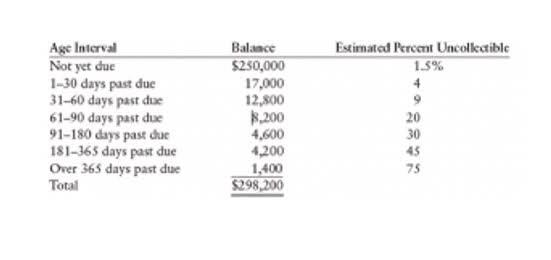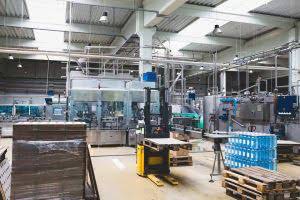
Conversion costs include all direct or indirect production costs incurred on activities that https://www.bookstime.com/ convert raw material to finished goods. Conversion costs include both direct and indirect production expenses, such as labor, overhead, and other indirect costs directly related to manufacturing activities. By analyzing conversion costs in this manner, businesses can identify cost-saving opportunities, optimize resource allocation, and make informed decisions to enhance their overall operational efficiency. Examples of direct labor workers include welders, machine operators, assemblers and painters etc.
ROAS Calculation – A Quick Guide
After paying attention to your keywords with low conversion rates, you likely have a bit of extra room in your budget. You can now apply it to the keywords having the best conversion rates. It is important to remember that numerous factors affect your conversions. This is true whether you want to find the cost per sale, cost per person watching a video, cost per website view, or something else.

Difference Between Conversion Cost and Prime Cost in Accounting
Conversion cost is a useful tool for cost conversion cost formula accounting and management, and it can help to improve the performance and profitability of any business. The cost of conversion is a crucial aspect in manufacturing inventory management. It refers to the expenses incurred during the production process, specifically the transformation of raw materials into finished goods.

Different Conversion Cost Examples
On the other hand, conversion costs are all manufacturing costs other than direct materials cost. Conversion costs are the labor and overhead expenses that “convert” raw materials into a completed unit. Each department tracks its conversion costs in order to determine the quantity and cost per unit (see TBD; we discuss this concept in more detail later).

In this section, we will delve into the concept of the conversion cost ratio and its significance in cost accounting and management. The conversion cost ratio measures the proportion of conversion costs to the total manufacturing cost, providing valuable insights into the efficiency and cost-effectiveness of the production process. Conversion costs in accounting are the costs incurred by companies when converting raw materials into finished products that are then ready to be sold in the market. Many of the same production characteristics are used by both conversion and prime cost, but each has a distinct perspective on product efficiency.
- The speed and usability of your website can have a significant impact on your conversions, as slow-loading and poorly-designed websites can frustrate and deter your visitors.
- They play a vital role in financial reporting, budgeting, and management accounting, providing a systematic and quantitative approach to understanding an entity’s financial health and operations.
- One of the most important pieces of information you can get from the values of conversion cost is whether your marketing campaign is profitable and, therefore, worth the effort.
- Direct labor costs only comprise costs directly related to the workers who participated in the manufacture of completed items.
- You should also follow best practices for web design, such as using a simple and clear layout, minimizing the number of clicks and scrolls, and using responsive and adaptive design techniques.
- Conversion costs in accounting are the costs incurred by companies when converting raw materials into finished products that are then ready to be sold in the market.
Types of Conversion Costs
- Because closing inventory is a line item on both the income statement and the balance sheet, estimating its value is simple.
- Remember, these are just a few strategies to improve conversion cost efficiency.
- In contrast, if the business regularly invests a big chunk of its expense on raw materials, Prime costs can provide a better overview.
- Conversion costs reflect a company’s total amount spent converting raw materials into fully-furbished products.
- Rather, such expenses are considered as indirect labor which goes to the entity’s total manufacturing overhead cost (discussed later in this article).
Conversion cost is the cost the company spends on unusual expenses and direct labour when turning raw materials into finished products. This costing formula is used in cost accounting by those running manufacturing businesses or any company producing goods. It is used to derive the value of ending inventory and show it in the balance sheet.

You can use tools such as google PageSpeed insights, google Mobile-Friendly test, and GTmetrix to measure and improve the performance and responsiveness of your website. You should also follow best practices for web design, such as using a simple and clear layout, minimizing the number of clicks and scrolls, and using responsive and adaptive design techniques. They invested ₹2,00,000 in galvanised iron sheets, ₹1,50,00 in aluminium sheets, ₹80,000 on SBR Accounting Periods and Methods tyres, and paid ₹1,00,000 as employee wages.
Conversion Cost Formula and Definition

Conversion cost is one such method in cost accounting that helps understand direct labour and manufacturing overhead costs. Companies that manufacture inventory rely largely on metrics to track production and analyze the efficiency with which inventory is manufactured and sold. Conversion costs are one of the most widely used metrics for this.This indicator refers to the costs of converting raw materials into sellable goods. In this post, we will define conversion cost, describe common ones that a business may face, the formula for calculating it, and provide examples of how to use it for accounting in your firm. Conversion costs play a significant role in determining the overall cost structure of manufacturing operations.
